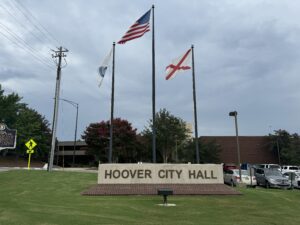Alabama’s midterm elections by the numbers
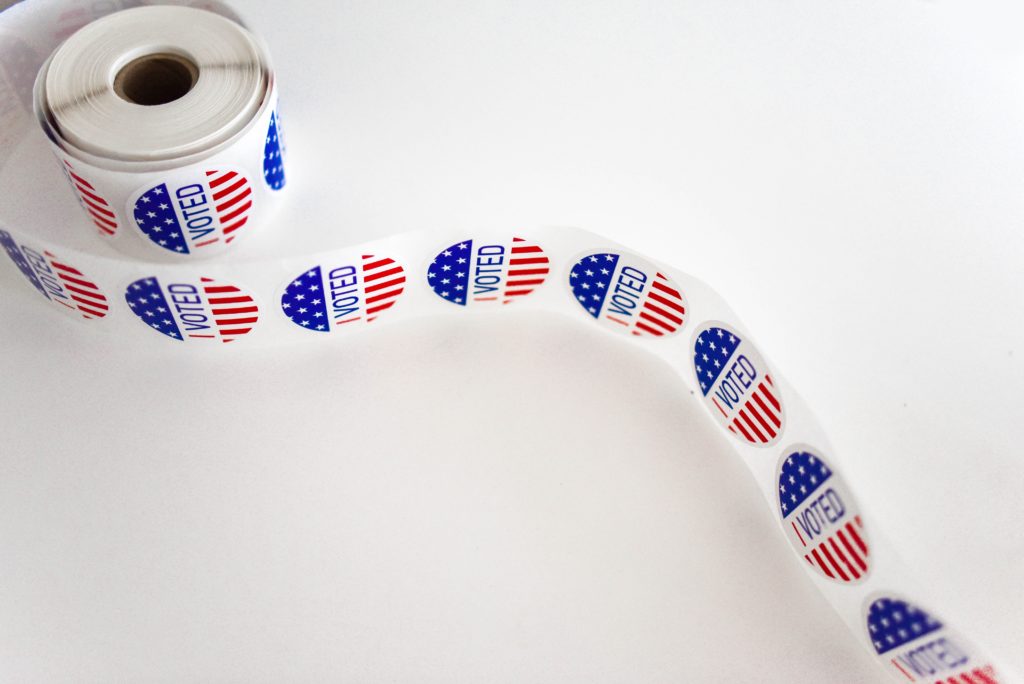
Sure Tuesday was a red tide in Alabama, but there were some interesting numbers to take away from a day at the polls. Here’s a look at some of the numbers from Tuesday’s unofficial results: 50: The percentage of voters who went to the polls. That means 1.72 million out of the 3.45 registered voters in the state cast ballots on Tuesday. 13: The number of counties Democratic gubernatorial candidate Walt Maddox won of Alabama’s 67 counties. Republican Kay Ivey won 54. 0: The number of counties that Republican President Donald Trump won in 2016 that went to Maddox this year. 1: The number of counties that Republican President Donald Trump won in 2016 that went Democratic statewide candidates on Tuesday. While Republican Kay Ivey may have narrowly won Conecuh County on Tuesday, Conecuh voters clearly did not vote straight ticket as the county flipped to support the Democrat candidates in the Lt. Governor and Attorney General’s races. 4: The number of constitutional amendments approved by Alabama voters. The two most controversial being one that deals with abortion and another that allows the display of the Ten Commandments in public and government buildings. 72: The highest percentage by which a state constitutional amendment was approved. Amendment One, which allows schools and public agencies to display the Ten Commandments in public settings, only had 28 percent of voters saying ‘no.’ 7: The number of House incumbents that won their re-election bids. For those keeping score at home, that means all incumbents will return to Washington. 80: The highest percent an incumbent House member won their re-election campaign. 4th District U.S. Rep. Robert Aderholt bested his opponent Lee Auman 80 – 20 percent. 8: The number of Democrats who won seats in the State Senate. Meanwhile 27 Republicans won seats, defeating 14 Democratic opponents. 77: The number of Republicans who seats in the State House. Meanwhile only 28 Democrats will head to Montgomery in the spring. 6: Number of counties will greater than 50,000 voter turnout between both parties. That would be Baldwin, Jefferson, Mobile, Montgomery, Shelby and Tuscaloosa counties. Jefferson County boasts far and away the largest turnout with 257,345 voters total. The next highest turnout comes from Mobile County with 132,029 voters.
Alabama voters say nation headed in right direction
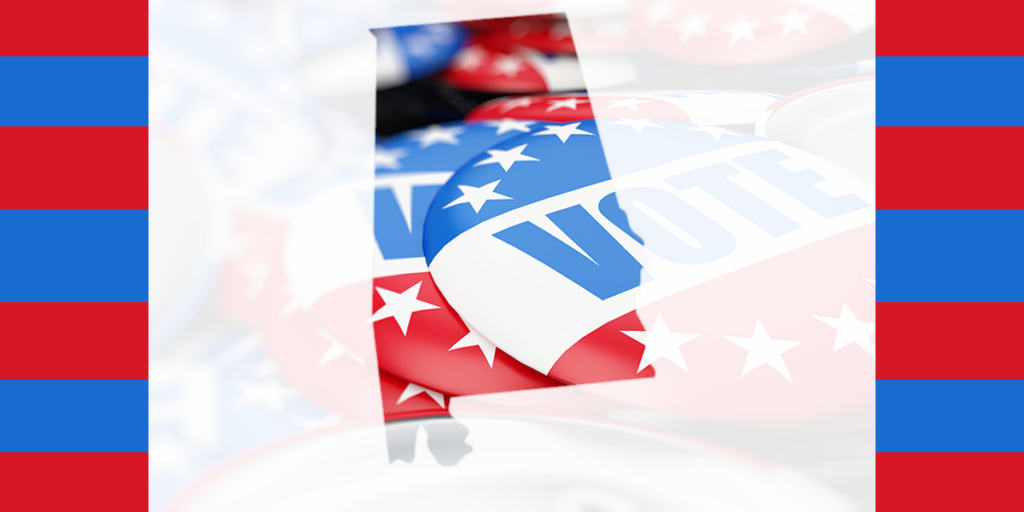
A majority of voters casting midterm election ballots in Alabama said the country is headed in the right direction, according to a wide-ranging survey of the American electorate. As voters cast ballots for governor and members of Congress in Tuesday’s elections, AP VoteCast found that 59 percent of Alabama voters said the country is on the right track, compared with 41 percent who said the country is headed in the wrong direction. Here’s a snapshot of who voted and why in Alabama, based on preliminary results from AP VoteCast, an innovative nationwide survey of about 138,000 voters and nonvoters _ including 774 voters and 235 nonvoters in the state of Alabama _ conducted for The Associated Press by NORC at the University of Chicago. ___ RACE FOR GOVERNOR Voters under 45 were split between Republican Kay Ivey and Democrat Walt Maddox in the race for governor. Voters ages 45 and older were more likely to favor Ivey. Voters without a college degree modestly supported Ivey. Similarly, college graduates preferred Ivey. ___ TOP ISSUE: IMMIGRATION Immigration was at the forefront of voters’ minds: 32 percent named it as the most important issue facing the nation in this year’s midterm elections. Others considered the economy (19 percent), health care (19 percent), terrorism (11 percent) and gun policy (8 percent) to be the top issue. ___ STATE OF THE ECONOMY Voters have a positive view of the nation’s current economic outlook _ 63 percent said the nation’s economy is good, compared with 37 percent who said it’s not good. ___ TRUMP FACTOR For 42 percent of Alabama voters, President Donald Trump was not a factor they considered while casting their votes. By comparison, 38 percent said a reason for their vote was to express support for Trump, and 19 percent said they voted to express opposition to Trump. A majority of voters in Alabama had positive views of Trump: 64 percent said they approve of how he is handling his job as president, while 36 percent said they disapprove of Trump. ___ AP VoteCast is a survey of the American electorate in all 50 states conducted by NORC at the University of Chicago for The Associated Press and Fox News. The survey of 774 voters and 235 nonvoters in Alabama was conducted Oct. 29 to Nov. 6, concluding as polls close on Election Day. Interviews in English and Spanish with self-identified registered voters selected from opt-in online panels are calibrated with interviews of randomly sampled registered voters nationwide. The margin of sampling error for voters is estimated to be plus or minus 10.1 percentage points. Although there is no statistically agreed upon approach for calculating margins of error for non-probability samples, the margin of error is estimated using a calculation called the root mean squared error and other statistical adjustments. All surveys are subject to multiple sources of error, including from sampling, question wording and order, and nonresponse. Find more details about AP VoteCast’s methodology at https://www.ap.org/votecast. ___ AP created this story automatically using data from NORC. Republished with permission from the Associated Press.
Donald Trump views midterms through presidency-defining lens
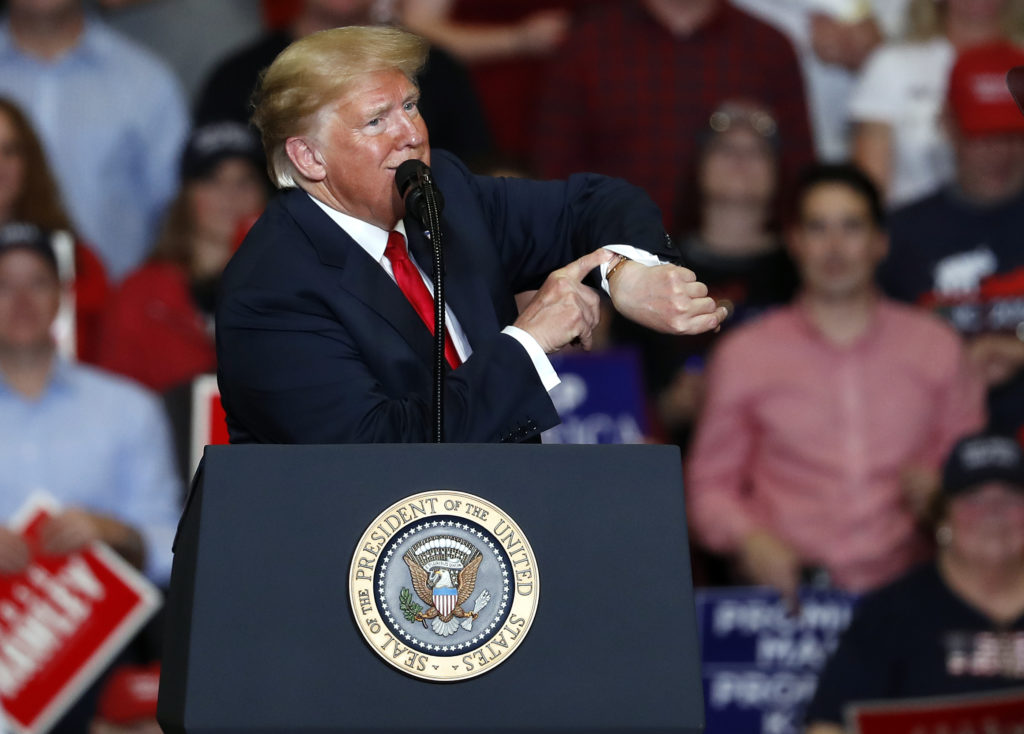
President Donald Trump knows he’s on the line. The president spent Election Day calling allies, tweeting endorsements and following news coverage, after concluding a six-day rally blitz in Missouri late Monday. Trump packed his closing argument with hardline immigration rhetoric and harsh attacks on Democrats as he stared down the prospect of Republican losses that could shadow his presidency. “Everything we have achieved is at stake,” he said. “Because they can take it apart just as fast as we built it.” Faced with the possibility of keeping the Senate, but losing the House, aides have begun laying out the political reality to Trump, who could face an onslaught of Democratic-run investigations and paralysis of his policy agenda. In turn, Trump has already been trying out defensive arguments, noting that midterm losses are typical for the party in the White House, pointing out a high number of GOP retirements and stressing that he has kept his focus on the Senate. But the election remained likely to serve as a referendum on Trump’s racially charged appeals and the strength of the coalition that powered him to the White House — a group he will need again in just two years. Trump’s scorched-earth campaigning came to define the 2018 campaign. In the final days, he sought to motivate supporters with the battle over the confirmation of Supreme Court Justice Brett Kavanaugh — at one point mocking a woman who claimed the judge had sexually assaulted her when they were in high school. Returning to his immigration-heavy 2016 playbook, Trump went on to unleash his full fury on a caravan of migrants slowly making their way to the southern border. His take-no-prisoners approach troubled many Republicans seeking to appeal to moderate voters in suburban House districts, but Trump prioritized base voters in the deep red states that could determine the fate of the Senate. At times he even appeared at odds with his own campaign, which in the election’s final days released a gauzy ad aimed at suburban women. Trump did not care for the soft-focus ad, which notably did not mention him, according to a person familiar with the president’s thinking who was not authorized to speak publicly. Instead he promoted a shocking, expletive-loaded video featuring a Latino man convicted of murdering two police officers, which was widely decried as being racist. But while Trump’s plays to his most loyal supporters help rev up the crowds in small towns and rural areas in red states, they were viewed as a turnoff to moderates, independents and women in the suburban districts needed to keep the House in GOP hands. Still, Trump brushed off criticism that he was alienating moderate voters as he continued his massive rallies and overheated rhetoric. “These rallies are the best thing we’ve done. I think that the rallies have really been the thing that’s caused this whole big fervor to start and to continue,” he told reporters on Sunday. During the final stretch of the race, Trump tore across the country, holding 11 rallies over six days. On Monday, he blitzed through a trio of Midwest states he won in 2016 — Ohio, Indiana and Missouri — exhorting his supporters to help send Republicans to Capitol Hill to help safeguard his administration’s accomplishments and a booming economy. “It’s all fragile. Everything I told you, it can be undone and changed by Democrats if they get in,” Trump told supporters during a telephone town-hall organized by his campaign before Air Force One took off for Cleveland. “You see how they’ve behaved. You see what’s happening with them. They’ve really become radicalized.” Trump pointed to his boisterous rally crowds as proof that Republicans were surging at the right time, rejecting suggestions that Democrats entered Election Day with an edge in enthusiasm. He frequently invoked his upset win in 2016 and tried to recapture that energy in his final rallies, at times relegating the candidates he had traveled to endorse to supporting actors in the theater of a Trump rally. And he plowed forward despite a spate of election-season violence that gripped the nation. He continued to hold events amid a mail bomb scare that targeted his political opponents and went forward with a rally hours after a gunman massacred 11 people in a Pittsburgh synagogue. While Trump condemned violence and anti-Semitism, at times he seemed to view the tragedies through the lens of his own political fate. At a rally in Missouri on Thursday, he bemoaned the fact that “two maniacs” had blunted GOP campaign “momentum.” Trump added that “we don’t care about momentum when it comes to a disgrace like just happened to our country.” But he then added the tragedies had served to “stop a certain momentum, and now the momentum is picking up.” At his final rally late Monday in Missouri, Trump aligned stars of the conservative media, appearing with radio host Rush Limbaugh and Fox News personalities Sean Hannity and Jeanine Pirro. He basked in one of the loudest ovations of the campaign, a thunderous multi-minute cheer as he took the stage in Cape Girardeau. The crowd broke into a spontaneous version of “Amazing Grace” as medics attended to a rallygoer who had collapsed. Republished with permission from the Associated Press.
‘Everything’s at stake’ on eve of first Donald Trump-era elections
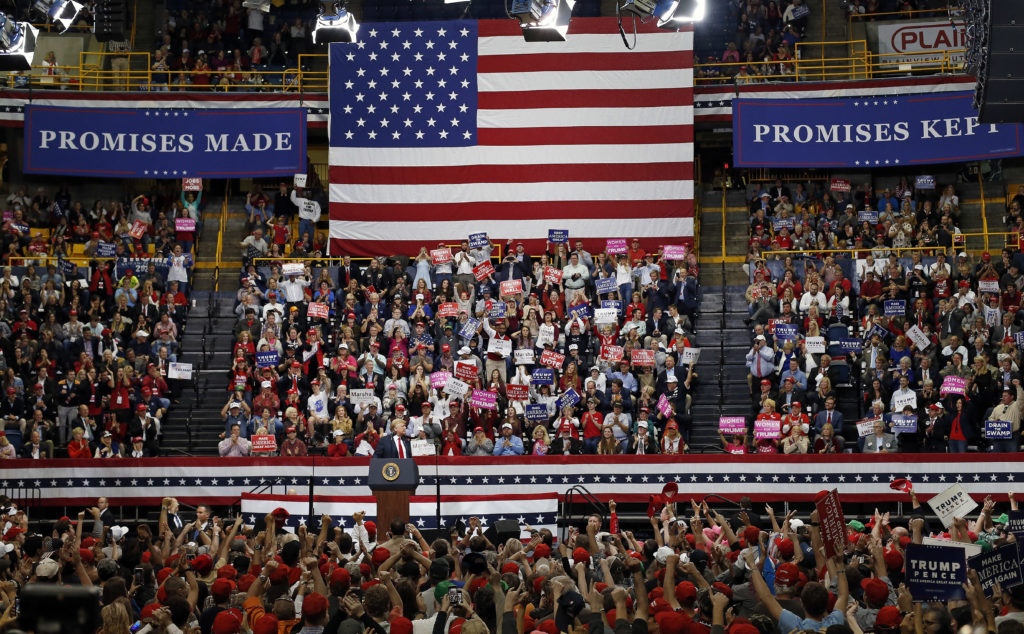
The day of reckoning for American politics has nearly arrived. Voters on Tuesday will decide the $5 billion debate between President Donald Trump‘s take-no-prisoner politics and the Democratic Party’s super-charged campaign to end the GOP’s monopoly in Washington and statehouses across the nation. There are indications that an oft-discussed “blue wave” may help Democrats seize control of at least one chamber of Congress. But two years after an election that proved polls and prognosticators wrong, nothing is certain on the eve of the first nationwide elections of the Trump presidency. “I don’t think there’s a Democrat in this country that doesn’t have a little angst left over from 2016 deep down,” said Stephanie Schriock, president of EMILY’s List, which spent more than ever before — nearly $60 million in all — to support Democratic women this campaign season. “Everything matters and everything’s at stake,” Schriock said. All 435 seats in the U.S. House are up for re-election. And 35 Senate seats are in play, as are almost 40 governorships and the balance of power in virtually every state legislature. While he is not on the ballot, Trump himself has acknowledged that the 2018 midterms, above all, represent a referendum on his presidency. Should Democrats win control of the House, as strategists in both parties suggest is likely, they could derail Trump’s legislative agenda for the next two years. Perhaps more importantly, they would also win subpoena power to investigate the president’s many personal and professional missteps. Tuesday’s elections will also test the strength of a Trump-era political realignment defined by evolving divisions among voters by race, gender and especially education. Trump’s Republican coalition is increasingly becoming older, whiter, more male and less likely to have a college degree. Democrats are relying more upon women, people of color, young people and college graduates. The political realignment, if there is one, could re-shape U.S. politics for a generation. Just five years ago, the Republican National Committee reported that the GOP’s very survival depended upon attracting more minorities and women. Those voters have increasingly fled Trump’s Republican Party, turned off by his chaotic leadership style and xenophobic rhetoric. Blue-collar men, however, have embraced the unconventional president. One of the RNC report’s authors, Ari Fleischer, acknowledged that Republican leaders never envisioned expanding their ranks with white, working-class men. “What it means to be Republican is being rewritten as we speak,” Fleischer said. “Donald Trump has the pen, and his handwriting isn’t always very good.” A nationwide poll released Sunday by NBC News and The Wall Street Journal details the depth of the demographic shifts. Democrats led with likely African-American voters (84 percent to 8 percent), Latinos (57 percent to 29 percent), voters between the ages of 18-34 (57 percent to 34 percent), women (55 percent to 37 percent) and independents (35 percent to 23 percent). Among white college-educated women, Democrats enjoy a 28-point advantage: 61 percent to 33 percent. On the other side, Republicans led with voters between the ages of 50 and 64 (52 percent to 43 percent), men (50 percent to 43 percent) and whites (50 percent to 44 percent). And among white men without college degrees, Republicans led 65 percent to 30 percent. Democrats hope to elect a record number of women to Congress. They are also poised to make history with the number of LGBT candidates and Muslims up and down the ballot. Former President Barack Obama seized on the differences between the parties in a final-days scramble to motivate voters across the nation. “One election won’t eliminate racism, sexism or homophobia,” Obama said during an appearance in Florida. “It’s not going to happen in one election. But it’ll be a start.” Trump has delivered a very different closing argument, railing against Latin American immigrants seeking asylum at the U.S. border. With the walking caravan weeks away, Trump dispatched more than 5,000 troops to the region. The president also said soldiers would use lethal force against migrants who throw rocks, before later reversing himself. Still, his xenophobic rhetoric has been unprecedented for an American president in the modern era: “Barbed wire used properly can be a beautiful sight,” Trump told voters in Montana. The hyper-charged environment is expected to drive record turnout in some places, but on the eve of the election, it’s far from certain which side will show up in the greatest numbers. The outcome is clouded by the dramatically different landscape between the House and Senate. Democrats are most optimistic about the House, a sprawling battlefield extending from Alaska to Florida. Most top races, however, are set in America’s suburbs where more educated and affluent voters in both parties have soured on Trump’s turbulent presidency, despite the strength of the national economy. Democrats need to pick up two dozen seats to claim the House majority. Billionaire former New York Mayor Michael Bloomberg, who personally invested $110 million to help Democrats this year, largely in the House, has seized on voter education levels in picking target races, according to senior aide Howard Wolfson. “In this cycle, it seemed as if there was a disproportionately negative reaction among highly educated voters to Trump,” he said. As a result, Bloomberg’s team poured money into otherwise overlooked suburban districts in states like Georgia, Washington state and Oklahoma because data revealed voters there were better-educated. Democrats face a far more difficult challenge in the Senate, where they are almost exclusively on defense in rural states where Trump remains popular. Democratic Senate incumbents are up for re-election, for example, in North Dakota, West Virginia, and Montana — states Trump carried by 30 percentage points on average two years ago. Democrats need to win two seats to claim the Senate majority, although most political operatives in both parties expect Republicans to add to their majority. While Trump is prepared to claim victory if his party retains Senate control, at least one prominent ally fears that losing even one chamber of Congress could be disastrous. “If they take back the House, he essentially will
America’s gender, racial divides on display in House races
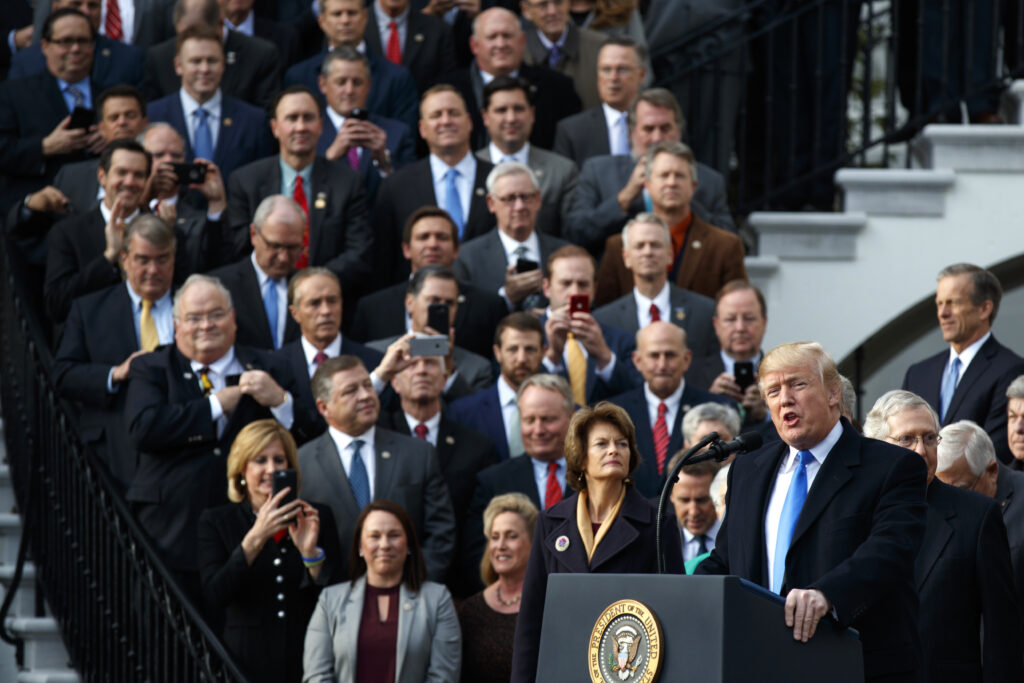
Perhaps nowhere is the choice facing voters next Tuesday more vividly on display than in the battle for control of the U.S. House. Democrats are fielding more women and minority candidates than ever, while Republicans are trying to hold their majority with mostly white men. The disparity highlights a trend that has been amplified under President Donald Trump, with the two parties increasingly polarized along gender and racial lines as much as by issues. The result is that, in an election season playing out against the backdrop of bomb threats, violence and a charged immigration debate, the parties are presenting voters starkly different pictures of American leadership. Democrats have nominated more than 180 female candidates for the House, a new record. But while voters could send more than 100 of them to victory, Republicans could have fewer women than now in their ranks next year due to retirements and tough races, according to election analysts. Overall, nearly 9 in 10 House Republicans will be white men when the new Congress convenes in January. The racial divide is even starker. House Republicans now count just over a dozen minority members, a number that’s not expected to change much after the election. The lack of minorities in the conference comes into sharp visual focus when House Republicans gather in a large group, as they did last December when they celebrated the passage of tax cuts with Trump at the White House. Meanwhile, African-American, Latino and Asian-American lawmakers make up almost half the House Democratic caucus. And for the first time, less than half the Democratic candidates for the House are white men, and the Democrats are poised to send the first Native American and Muslim-American women to the House. It’s what the Reflective Democracy Campaign calls a “historic shift.” After Tuesday’s election, it’s likely that 87 percent of Republicans in the House will be white men, compared to just 37 percent for Democrats, said David Wasserman, who analyzes races for the Cook Political Report. Marc Hetherington, a professor of political science at the University of North Carolina at Chapel Hill, said the trend began long before this year’s election. “There’s a relatively easy explanation — the Republican Party over the past 20 years has become the party of white men,” he said. At the same time, “Democrats have come to be seen as the party of minorities.” Political scientists have been debating whether Congress’ low approval rating — now 21 percent — has something to do with lawmakers not seeming to reflect the country they represent, said Matt Barreto, a professor at UCLA who is also a pollster working to mobilize Latino voters this cycle. Overall, while the House is closer to reflecting the makeup of the country, which is still majority white, the representation is lopsided between the parties. “Everyone wants a representative from their community to stand up for their issues,” Barreto said. For the House, he said, “It’s the entire point: They’re representatives.” Democrats need a net gain of 23 seats to win back the House in the election on Tuesday. Enthusiasm has seemed to be on their side, especially in fundraising, but it’s unclear if that energy will be enough to win districts that swung to Trump in 2016 or have traditionally favored Republicans. The outcome could hinge on the suburbs, where Democrats are hoping that a voter backlash against Trump and GOP policies will help carry their candidates to victory. One closely watched race is outside of Richmond, Virginia, where Republican Rep. Dave Brat, a one-time tea party favorite, is facing a stiff challenge from political newcomer Abigail Spanberger, a former CIA operative. Brat was campaigning over the weekend at the Innsbrook Pumpkin Palooza, pausing to watch a pumpkin catapult as he mingled with voters. Trump supporter Jen Dodge from nearby Glen Ellen said she’s all for bringing more diversity to Congress. But as an employment recruiter, she said she also wants the best candidate for the job. And she said she appreciates what the president and the Republican Congress have done for the economy, especially by passing tax cuts. “We really need people in the Congress who are going to speak the best for the people,” she said. Brat, she said, “does what he says he’s going to do.” Down the road at a community forum with Spanberger, optometrist Lisa Bennett said she wants lawmakers who listen to voters. “American people are frustrated,” she said, recalling the protesters who confronted senators on Capitol Hill over Brett Kavanaugh’s confirmation to the Supreme Court. “You shouldn’t have to stand in an elevator and yell at your representative.” The diversity gap between the parties has been growing since the civil rights battles of the 1960s, when white voters shifted toward Republicans and the party’s support from African-Americans plummeted. Republicans set out to attract more votes from minorities and particularly Latinos after their election losses in 2012, but Trump turned that political strategy on its head in 2016, showing they could win by pulling white voters away from Democrats. Now the president’s coalition is being put to the test. After conducting a poll of 72 competitive House districts, the Cook Political Report and LSU Manship School said this year’s election “feels like 2010, in reverse.” Almost half of Americans, 49 percent “feel frustrated” about Trump’s presidency. That’s the same share who said they felt frustrated about President Barack Obama during that year’s midterm elections, when Democrats lost the majority in a wave election fueled by conservative newcomers eager to confront the White House. Republished with permission from the Associated Press.
Democrats’ not-so-secret plan to fight midterm malaise
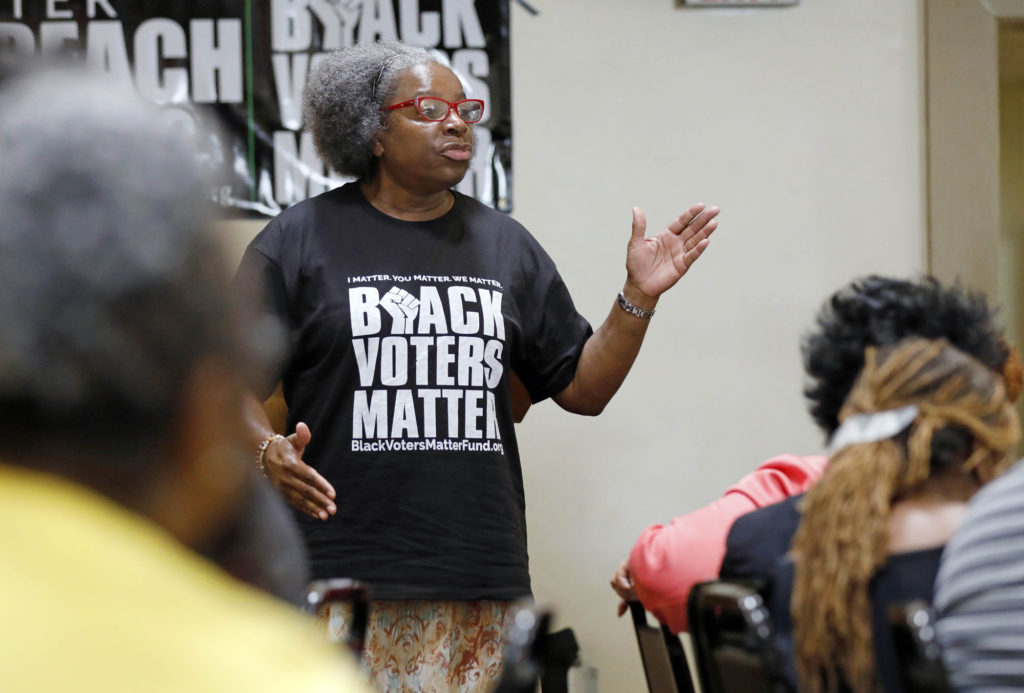
They’re asking pastors to text their congregants about the importance of voting. They’re connecting with thousands of Puerto Ricans displaced by Hurricane Maria. And they’re relying on groups like the NAACP, which has tripled its spending from 2016 to energize black voters. Less than three weeks before Election Day, Democrats are sparing nothing to make sure their voters head to the polls. It’s all part of an effort to avoid the disappointment of previous elections when low turnout dashed high expectations. “2016 was a low point for a lot of us,” said Jamal Watkins, vice president of engagement at the NAACP. “People have awakened and said, ‘Wait a minute, we can’t lose, and we can’t lose like this.’ Folks are fired up to reinvest in turnout.” Younger voters and voters of color tend to stay home in non-presidential elections, making the midterm electorate older, whiter and more Republican-tilting. But that could change this year, Democrats and outside groups say, if unprecedented efforts to reach so-called infrequent voters galvanize people who previously sat on the sidelines. Democrats have reason for optimism: The party saw strong turnout in nearly a dozen federal special elections ahead of the midterms, with Democratic candidates consistently outperforming Republicans. But the organizing flurry comes amid concerns over ballot access and election security, which have become a flashpoint in the high-profile gubernatorial race in Georgia. There is also mounting anxiety about whether efforts to mobilize Latino voters will translate into votes, particularly in several key races in heavily Latino districts. The party is spending big to ward against such threats. The Democratic Congressional Campaign Committee, the party’s arm focused on House races, is spending more than $25 million in 45 battleground districts to mobilize female voters, millennials, African-Americans and Hispanics, officials said. That’s a far more significant investment than past cycles. The committee is putting an emphasis on turning out African-American women, including running advertising focused on black women ages 18-39 in more than 40 districts. The DCCC has also run Spanish-language TV and radio ads across the country. Between field efforts and paid media, voters of color in targeted swing districts will have heard from the DCCC more than 100 times in the closing 60 days of the election. And in a twist, some of the outreach this year will be facilitated by local community leaders instead of anonymous politicos. “As an example of the local voter contact and text messaging program that we are doing, we are partnering with a series of pastors and local validators across the country,” said DCCC Executive Director Dan Sena. “When you’re getting a text message saying ‘hey – early vote’s starting,’ you’re not getting it from someone in Washington D.C. You’re actually getting it from somebody in Georgia that has a big delegation, or you’re getting it from someone on campus that you know.” The Democratic National Committee also beefed up its voter database, purchasing 94 million cellphone numbers, according to a DNC official who spoke on the condition of anonymity to discuss internal strategy. The official said the additional cell phone numbers have helped with voter contact in key races across the country, including encouraging sporadic voters to participate. Republicans say they have their own well-organized, well-funded turnout machine that dwarfs Democrats’ efforts. A Republican National Committee aide said the organization has raised more than $250 million this cycle, invested in 28 states, more than 540 paid staffers and thousands of volunteers who are focused on turning out Republicans who don’t vote often and swing voters who participate more frequently. The committee raised more than $150 million during roughly the same period ahead of the 2014 midterms. The aide said the RNC has made more than 50 million voter contacts, either over the phone or by going door-to-door The Democratic organization effort goes beyond the traditional party structure. NextGen America, the advocacy group backed by billionaire environmentalist and donor Tom Steyer, is injecting more money into a closing push to rally young voters. The group will spend more than $4 million on digital ads across 11 states, targeting more than 4.3 million young voters. NextGen is also running the first political ads on Twitch, a popular video streaming service, as well as places like Reddit, Spotify and Pandora. “Young people in general feel like they’ve really been shut out of the system,” said Aleigha Cavalier, a spokeswoman for NextGen America. “Our goal with digital is to find a message that works for them and actually put it where their eyeballs will see it.” The Human Rights Campaign’s Equality Votes PAC launched a more than $2 million campaign across eight key races spanning digital, direct mail, text and phone voter contact. The NAACP’s campaign is targeting more than 5 million “infrequent” black voters, including in the key states of Florida, Georgia and North Carolina, in a $6 million voter mobilization push, up from $2 million spent on mobilization in 2016. The push includes upward of 20 staffers focused on mobilizing black voters, the majority of those, according to Watkins, working in key states with thousands of on-the-ground volunteers. In Georgia, the organization is targeting more than 700,000 “infrequent” voters. In Florida, the number swells to more than 900,000. The NAACP is not the only group that’s boosting its turnout effort. The AFL-CIO, the nation’s largest labor federation, also shifted its strategy. Julie Greene, who is leading the union’s mobilization efforts, said that in 2014 and 2016, the union experimented with an independent expenditure program that had more of a focus on the general public, rather than the union’s member-to-member program. The union found that its members had not turned out in support of labor-endorsed candidates at the same levels as in the past. The union now hopes to increase turnout among its members by 5 percent, up from 57 percent in 2014. But it is also investing significantly in mobilizing Hispanic and African-American voters. Last week, the union announced plans to air ads on African-American and Spanish-language radio in
Donald Trump stands by warning of ‘violence’ if Dems win midterms
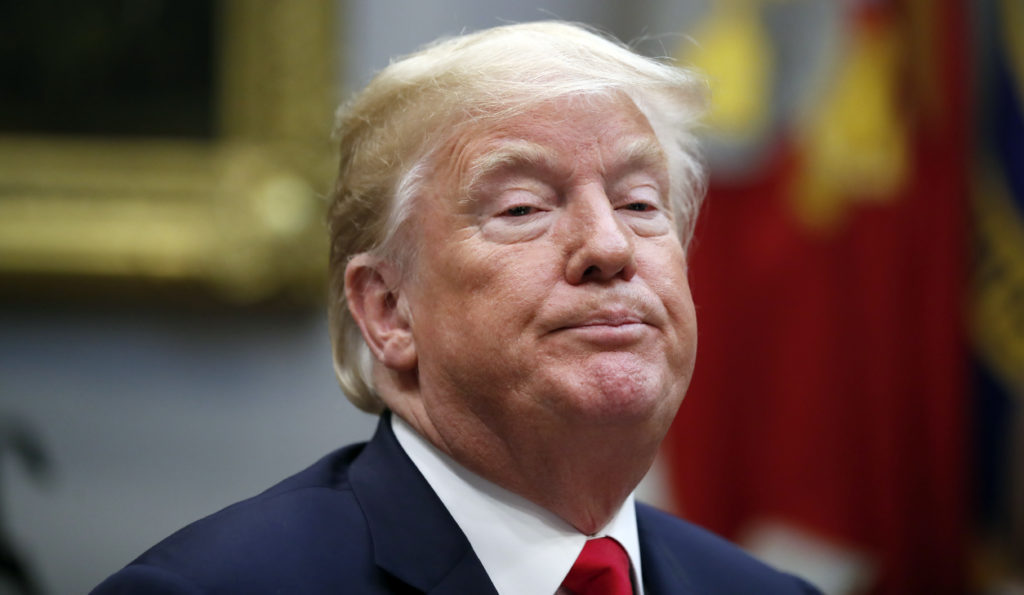
President Donald Trump urged evangelical leaders this week to get out the vote ahead of the upcoming midterm elections and warned of “violence” by opponents if they fail. Trump made the dire warning at a White House dinner Monday evening attended by dozens of conservative Christian pastors, ministers and supporters of his administration. Trump was stressing the stakes in November when he warned that, if Democrats win, they “will overturn everything that we’ve done and they’ll do it quickly and violently,” according to attendees and audio of his closed-door remarks obtained by media outlets, including The New York Times. He specifically mentioned self-described antifa, or anti-fascist groups, describing them as “violent people.” Asked Wednesday what he meant, Trump told reporters, “I just hope there won’t be violence.” “If you look at what happens … there’s a lot of unnecessary violence all over the world, but also in this country. And I don’t want to see it,” Trump said. At the dinner, Trump talked up his administration’s efforts to bolster conservative Christian causes and urged those gathered to get their “people” to vote, warning the efforts could quickly be undone. “I just ask you to go out and make sure all of your people vote,” Trump said, according to the Times. “Because if they don’t — it’s Nov. 6 — if they don’t vote we’re going to have a miserable two years and we’re going to have, frankly, a very hard period of time because then it just gets to be one election — you’re one election away from losing everything you’ve got.” Ohio Pastor Darrell Scott, an early Trump supporter who attended the dinner, said he interpreted the comments differently than the media has portrayed them. “It wasn’t any kind of dire warning,” Scott said, “… except the things that we’ve been working on as a body of voters will be reversed and overturned.” “What he was saying,” Scott continued, is that “there are some violent people … but it wasn’t that we’ve got to worry about murder on the streets and chaos and anarchy … just that the things we’ve worked for will be overturned.” Tony Perkins, the president of the Family Research Council and another attendee, said he, too, interpreted Trump’s message as a warning not to be complacent. While Trump did make a reference to antifa, Perkins told CNN, “I don’t think anybody in the room suggested that there was going to be violence across the nation.” “I did not interpret him to say that the outcome of the election is going to lead (to) violence in the streets, and violence in the churches,” he told CNN. Republished with permission from the Associated Press.

